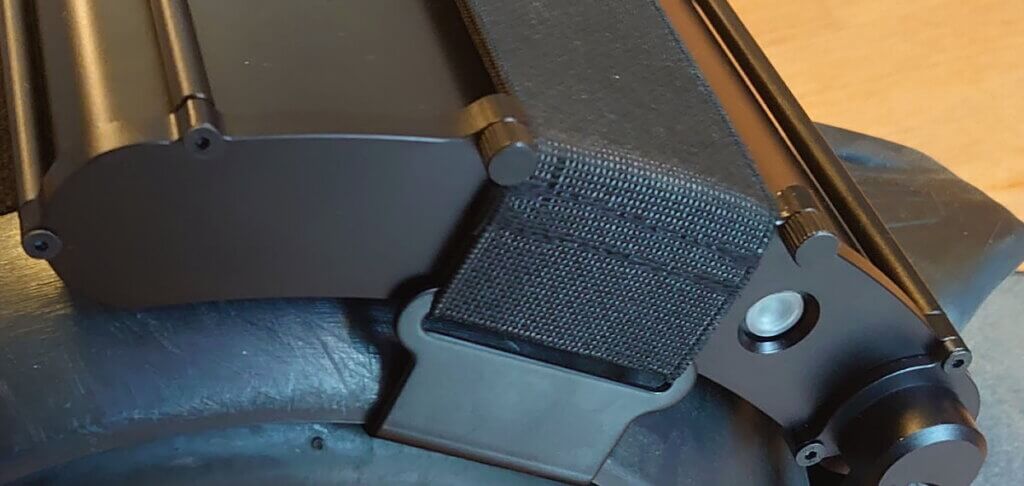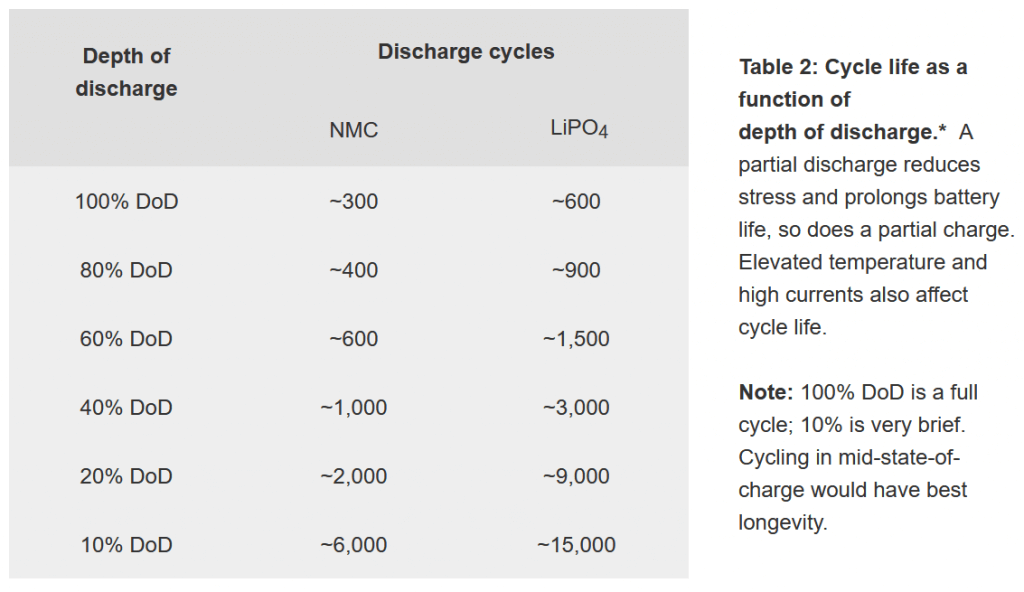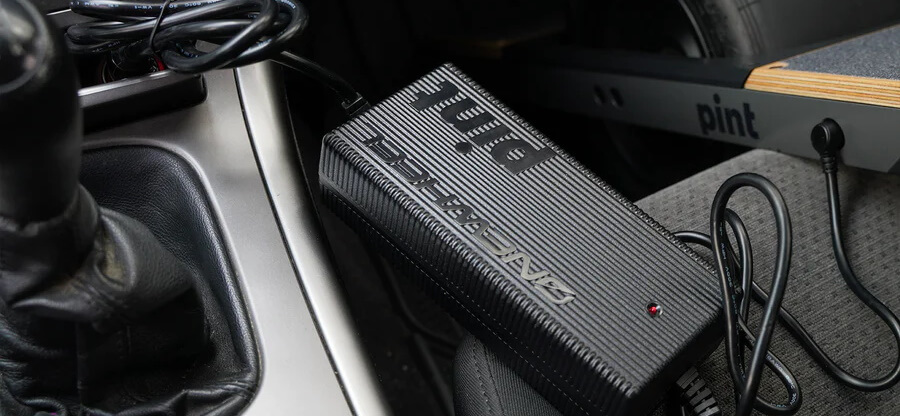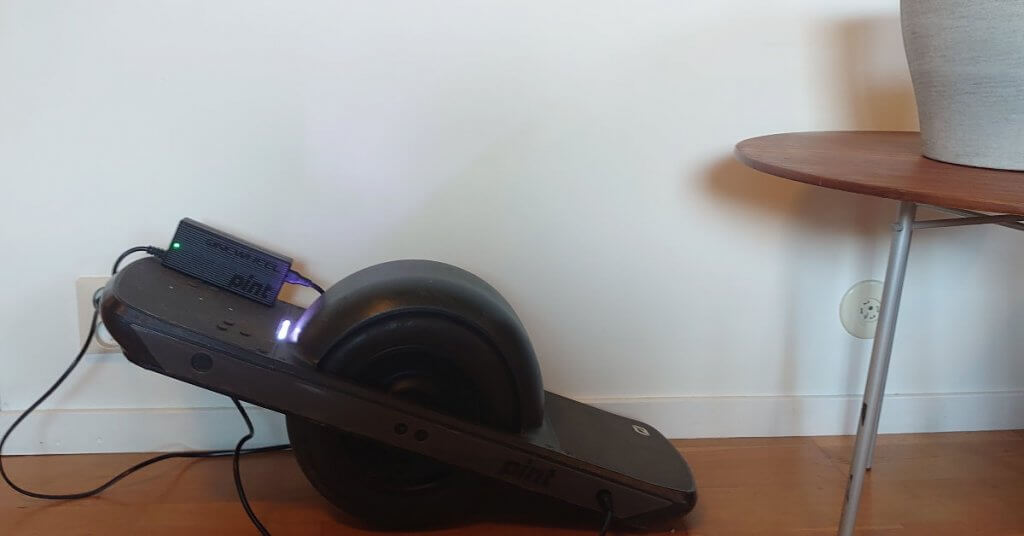Enhance your Onewheel experience with our guide to optimal battery management. Learn how to charge your Onewheel correctly, the ideal charging duration, and whether leaving it overnight is recommended. We cover battery types, including Lithium Iron Phosphate (LiFePo4) and Nickel Manganese Cobalt Oxide (NMC), and share long-term storage tips.
Discover the impact of fast charging, the truth about Ultra chargers, and insights into battery degradation. Elevate your Onewheel journey by mastering battery care. Read on for tips to keep your Onewheel battery in top condition and maximize your riding pleasure.
These tips work for all Onewheel models, the V1, XR, Pint, Pint X, GT, and the GT S-Series.
How to charge an Onewheel
Normal charging of the Onewheel is done by simply:
- Connect the charger first to a power outlet and then to the Onewheel charging port. The charger will display a red light when charging.
- The charger will automatically stop charging when the battery pack is fully charged indicated by a green light.
- Disconnect the charger first from the Onewheel and then from the power outlet.
How long does it take to charge an Onewheel?
With the normal standard charger, it takes 2 hours to fully charge a Onewheel.
| Model | Standard Charger | Ultra/Hyper Charger |
| Onewheel+ XR | 120 minutes | 60 minutes |
| Onewheel Pint | 120 minutes | 50 minutes |
| Onewheel Pint X | 225 minutes | 110 minutes |
| Onewheel GT | 200 minutes | 90 minutes |
Should I leave my Onewheel plugged in?
The Onewheel has an intelligent battery management system (BMS), designed to keep the battery in good shape. Future Motion made a statement that is fine to leave the board plugged in, f you plan to not ride in a couple of days it’s good practice to unplug the board. for long-term storage, more than 2 weeks leave it at 50-70%. When the board is fully charged and connected the BMS will start to balance the cells to keep them in good shape.
How long does an Onewheel battery last?
The Onewheel+XR can go 12-18 miles on a full battery, compared to the Onewheel Pint and its predecessor, which has a range of about 6-8 miles per charge.
There are extension modifications like swapping the battery for a higher capacity (like Chibatterysystems and the CBXR), and adding battery packs on the fender or in a backpack to extend the range of the Onewheel (VnR).
One of the latest is the GT40 from GTmod which almost triple your Pint’s range. Read more in the roundup and our recommendations of the best Onewheel battery extensions for the Pint.

VNR the Onewheel, Vamp & Ride, comes from Vamping/Biting into the main leads inside the Onewheel box to allow for a second battery to be connected. This secondary battery can be sitting on a 3D-printed holder on the fender or in a backpack. Vamping avoids the risk of bricking the BMS, the BMS, and controller are parred to each other and if one goes the system is bricked.
Nowadays you can get a chip called JWFFM by JW batteries that allows you to connect any BMS and controller.
VnR can be done on both the XR and Pint, the main supplier DIY of VnR kits is Sonnywheels.
Can I leave my Onewheel charging overnight?
Yes, you can leave the Onewheel charging overnight, the BMS is intelligent and will stop charging when the battery is full and start balancing the cells. It’s recommended to periodically leave the charger attached to your Onewheel overnight to allow the battery pack to thoroughly balance. You actually can’t overcharge your board so there’s no harm in leaving it on the charger overnight.
How do I balance the battery of the Onewheel?
When the Onewheek is fully charged the system starts to balance the cells in the battery pack. It’s recommended to periodically leave the Onewheel attached to the charger. If you haven’t used your Onewheel in more than 2 months make sure to charge it and let the battery balance before riding. Not charging it every two months will break the warranty according to Future Motion.
The battery should be charged at least once every two months. Failure to do so may void your warranty.
Future Motion
Onewheel Battery Long-term Storage
If you ever plan to store your board for a longer period, 2-4 weeks, make sure to leave it at 40-50%. Storing it at full will degrade it over time. There is a small discharge ever so often, around every month or so, make sure to check the battery. If needed charge the board back up again within the storage range.
Storage temperature should always be around room temperature, preferably in a dry place at 50°-60°F (10°-15°C). Extreme cold or heat will impact the battery over time degrading its perfromance. This has to do with the chemical compounds in the lithium battery.
Leaving it at 100% is not the end of the world, when you can take it down to 40-50%, still it’s better than a fully depleted battery. You shall not long-term store a battery fully depleted, this will degrade it over time.
What battery does the Onewheel have?
Depending on the model of the Onewheel you either have a Lithium Iron Phosphate (LiFePo4) or Nickel Manganese Cobalt Oxide (NMC). The latest models use NMC.
Lithium nickel-manganese-cobalt (NMC)
NMC is compact and lightweight, and therefore ideal for devices like Onewheel, its weight/energy and quality/price ratios are excellent. The battery technology is considered dangerous due to its lack of chemical stability and therefore does need a good Battery Management System (BMS).
| Model | Battery |
| Onewheel Original | Lithium Iron Phosphate (LiFePo4) 48V |
| Onewheel + | Lithium Iron Phosphate (LiFePo4) 48V |
| Onewheel XR | Nickel Manganese Cobalt Oxide (NMC) 324Wh 63V |
| Onewheel Pint | Nickel Manganese Cobalt Oxide (NMC) 148Wh 63V |
| Onewheel Pint X | Nickel Manganese Cobalt Oxide (NMC) |
| Onewheel GT | Nickel Manganese Cobalt Oxide (NMC) |
| Technology | Power | Prices | Number of cycles | Energy density | Safety | Lifetime | Weight |
|---|---|---|---|---|---|---|---|
| NMC | +++ | ++ | 300-800 | ++ | + | + | +++ |
Deep charge an Onewheel

Chalmers University of Technology, Sweden, reports that using a reduced charge level of 50% SOC increases the life expectancy of the vehicle Li-ion battery by 44–130%.
Does the Ultra charger degrade battery life?
Fast charging will put stress on the battery but not significantly degrade battery life if a correct fast charger is used. Let’s look at the Onewheel Pint:
- Standard charger is 63V @ 1.3A (~0.6C)
- Ultra charger is 63V @ 3.0A (~1.2C)
The Battery University says NMC charge rate above 1C reduces battery life. A 1C rate means that the discharge current will discharge the entire battery in 1 hour. These are over full discharge cycles, which most people aren’t doing. Even when the Pint’s app battery meter shows 0%, there still is some capacity remaining to prevent damage to the cells, the same goes for 100%.
Lithium-ion battery fast chargers like the Onewheel do the “fast” charging up to around 70%. Then they relax and slow down the output current until the battery is full. So the Ultra charger is not delivering 3A for the entire charging time.

How an Onewheel battery degrades
All batteries like the Onewheel naturally degrade over their lifetime, this is because they are built upon consumable chemical reactions. The battery degradation can be accelerated by many means, generally the result of material defects, physical abuse, or being left in a state of charge of 0% or 100% for extended periods of time. As long as the battery management system (BMS) is well designed and engineered it does not degrade because of the frequency of charge or fast charging.
Top List of Charging Tips
Here is the list of tips to ensure your Onewheel battery stays in peak condition over its lifetime.
- Proper Charging Procedure:
- Connect the charger to a power outlet first, then to the Onewheel charging port.
- The charger’s red light indicates charging, and it automatically stops when the battery is full (green light).
- Disconnect from the Onewheel first, then from the power outlet.
- Charging Duration:
- Standard charger: 2 hours for a full Onewheel charge.
- Ultra/Hyper Charger reduces charging times (e.g., Onewheel+ XR in 60 minutes).
- Leaving Onewheel Plugged In:
- An intelligent Battery Management System (BMS) allows leaving it plugged in.
- Unplug if not riding for a few days; for long-term storage (over 2 weeks), maintain 50-70%.
- Battery Longevity:
- Onewheel+ XR covers 12-18 miles per full charge; other models have varying ranges.
- Consider battery extensions for increased range (e.g., GT40 from GTmod).
- Balancing the Battery:
- The system balances cells when fully charged; periodically leave Onewheel attached to the charger.
- Charge at least once every two months to maintain warranty.
- Long-Term Storage:
- Store for 2-4 weeks at 40-50%; avoid full storage to prevent degradation.
- Maintain room temperature for storage; periodic checks and recharging within storage range.
- Battery Types:
- Onewheel models use Lithium Iron Phosphate (LiFePo4) or Nickel Manganese Cobalt Oxide (NMC).
- NMC is compact and lightweight, ideal for Onewheel with good weight/energy ratios.
- Deep Charging Impact:
- Reduced charge level (50% SOC) increases Li-ion battery life by 44–130%.
- Ultra Charger:
- Fast charging stresses the battery but doesn’t significantly degrade life with the correct charger.
- Ultra charger charges fast up to 70%, then slows down, reducing stress.
- Battery Degradation Insights:
- Batteries naturally degrade due to chemical reactions.
- Well-designed Battery Management System (BMS) mitigates degradation from charge frequency or fast charging.


